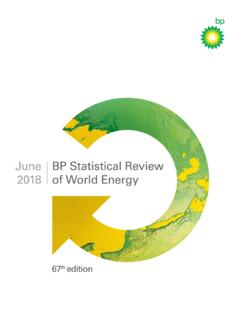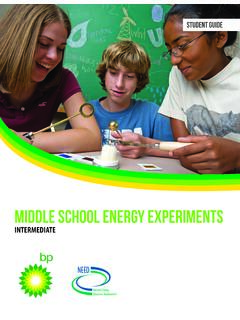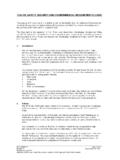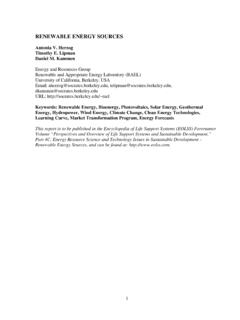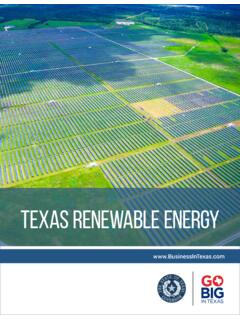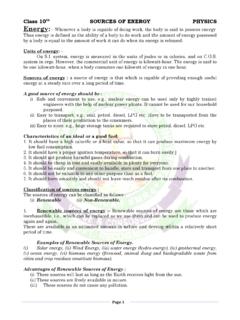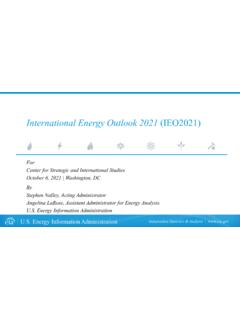Transcription of HIGH SCHOOL ENERGY EXPERIMENTS - BP
1 HIGH SCHOOL ENERGY EXPERIMENTSSECONDARY2 2015 The NEED Project 8408 Kao Circle, Manassas, VA 20110 the next generation of innovators Science, technology, engineering, and math (STEM) affect nearly every aspect of our lives from the cars we drive, to the food we eat, to the smartphones we use to communicate. Innovation is the key to helping the stay competitive in today s globalized, technology-driven world. As a result, STEM jobs are in high demand and typically pay significantly better than non-STEM fields. To fill the high-skilled jobs that will power the American economy in the future, the needs more students to study , BP depends on people with strong foundations in STEM to help solve the world s ENERGY challenges.
2 These engineers, scientists, and other professionals find ways to produce and deliver the ENERGY that heats our homes, powers our schools, cooks our food, and fuels our cars. The information and activities in this booklet will help you understand the important role STEM plays in the ENERGY industry. 2015 The NEED Project 8408 Kao Circle, Manassas, VA 20110 3 Student Text 4 Acid Rain 8 Clean Air 9 Corroding Metals 10 Cryogenic Roses 11 Frozen Salt 12 Natural and Man-Made Fibers 13 Slow Cooker 14 solar Distillation 15 thermal ENERGY Put to Work 16 Table of Contents4 2015 The NEED Project 8408 Kao Circle, Manassas, VA 20110 of EnergyChemical EnergyElasticEnergyNuclearEnergyGravitat ionalPotential EnergyElectricalEnergyRadiantEnergyTherm alEnergyMotionEnergySoundEnergyPOTENTIAL KINETICWhat Is ENERGY ?
3 ENERGY does things for us. It moves cars along the road and boats on the water. It bakes a cake in the oven and keeps ice frozen in the freezer. It plays our favorite songs and lights our homes at night. ENERGY helps our bodies grow and our minds think. ENERGY is a changing, doing, moving, working thing. ENERGY is defined as the ability to produce change or do work, and that work can be divided into several main tasks we easily recognize: ENERGY produces light. ENERGY produces heat. ENERGY produces motion. ENERGY produces sound. ENERGY produces growth. ENERGY powers of ENERGY There are many forms of ENERGY , but they all fall into two categories potential or kinetic.
4 POTENTIAL ENERGY Potential ENERGY is stored ENERGY and the ENERGY of position, or gravitational potential ENERGY . There are several forms of potential ENERGY , including: Chemical ENERGY is ENERGY stored in the bonds of atoms and molecules. It is the ENERGY that holds these particles together. Foods we eat, biomass, petroleum, natural gas, and propane are examples of stored chemical photosynthesis, sunlight gives plants the ENERGY they need to build complex chemical compounds. When these compounds are later broken down, the stored chemical ENERGY is released as heat, light, motion, and sound.
5 Elastic ENERGY is ENERGY stored in objects by the application of a force. Compressed springs and stretched rubber bands are examples of elastic ENERGY . Nuclear ENERGY is ENERGY stored in the nucleus of an atom the ENERGY that binds the nucleus together. The ENERGY can be released when the nuclei are combined or split apart. Nuclear power plants split the nuclei of uranium atoms in a process called fission. The sun combines the nuclei of hydrogen atoms into helium atoms in a process called fusion. In both fission and fusion, mass is converted into ENERGY , according to Einstein s Theory, E = mc2. Gravitational potential ENERGY is the ENERGY of position or place.
6 A rock resting at the top of a hill contains gravitational potential ENERGY because of its position. Hydropower, such as water in a reservoir behind a dam, is an example of gravitational potential ENERGY . eIntroduction to ENERGY 2012 2013 World Population 7,020,760,225 7,098,495,231 Population 313,873,685 316,128,839 World ENERGY Production Q Q ENERGY Production Q Q Renewables Q Q Nonrenewables Q Q World ENERGY Consumption Q Q ENERGY Consumption Q Q Renewables Q Q Nonrenewables Q QQ = Quad (1015 Btu) see Measuring ENERGY on page : ENERGY Information AdministrationEnergy at a Glance, 2013 2015 The NEED Project 8408 Kao Circle, Manassas, VA 20110 5 KINETIC ENERGY Kinetic ENERGY is motion the motion of waves, electrons, atoms, molecules, substances, and objects.
7 Electrical ENERGY is the movement of electrons. Everything is made of tiny particles called atoms. Atoms are made of even smaller particles called electrons, protons, and neutrons. Applying a force can make some of the electrons move. Electrons moving through a wire are called electricity. Lightning is another example of electrical ENERGY . Radiant ENERGY is electromagnetic ENERGY that travels in transverse waves. Radiant ENERGY includes visible light, x-rays, gamma rays, and radio waves. solar ENERGY is an example of radiant ENERGY . thermal ENERGY , which is often described as heat, is the internal ENERGY in substances the vibration and movement of atoms and molecules within substances.
8 The faster molecules and atoms vibrate and move within a substance, the more ENERGY they possess and the hotter they become. Geothermal ENERGY is an example of thermal ENERGY . Motion ENERGY is the movement of objects and substances from one place to another. According to Newton s Laws of Motion, objects and substances move when an unbalanced force is applied. Wind is an example of motion ENERGY . Sound ENERGY is the movement of ENERGY through substances in longitudinal (compression/rarefaction) waves. Sound is produced when a force causes an object or substance to vibrate. The ENERGY is transferred through the substance in a wave.
9 Conservation of EnergyYour parents may tell you to conserve ENERGY . Turn off the lights, they say. But to scientists, conservation of ENERGY means something quite different. The Law of Conservation of ENERGY says ENERGY is neither created nor destroyed. When we use ENERGY , we do not use it completely we just change its form. That s really what we mean when we say we are using ENERGY . We change one form of ENERGY into another. A car engine burns gasoline, converting the chemical ENERGY in the gasoline into motion ENERGY that makes the car move. Old-fashioned windmills changed the kinetic ENERGY of the wind into motion ENERGY to grind grain.
10 solar cells change radiant ENERGY into electrical ENERGY . ENERGY can change form, but the total quantity of ENERGY in the universe remains the same. The only exception to this law is when a small amount of matter is converted into ENERGY during nuclear fusion and TransformationsChemicalMotionRadiantChem icalChemicalMotionElectricalThermalEnerg y TransformationsEfficiencyEnergy efficiency is the amount of useful ENERGY you can get out of a system. In theory, a 100 percent ENERGY efficient machine would change all of the ENERGY put in it into useful work. Converting one form of ENERGY into another form always involves a loss of usable ENERGY , usually in the form of thermal ENERGY .
